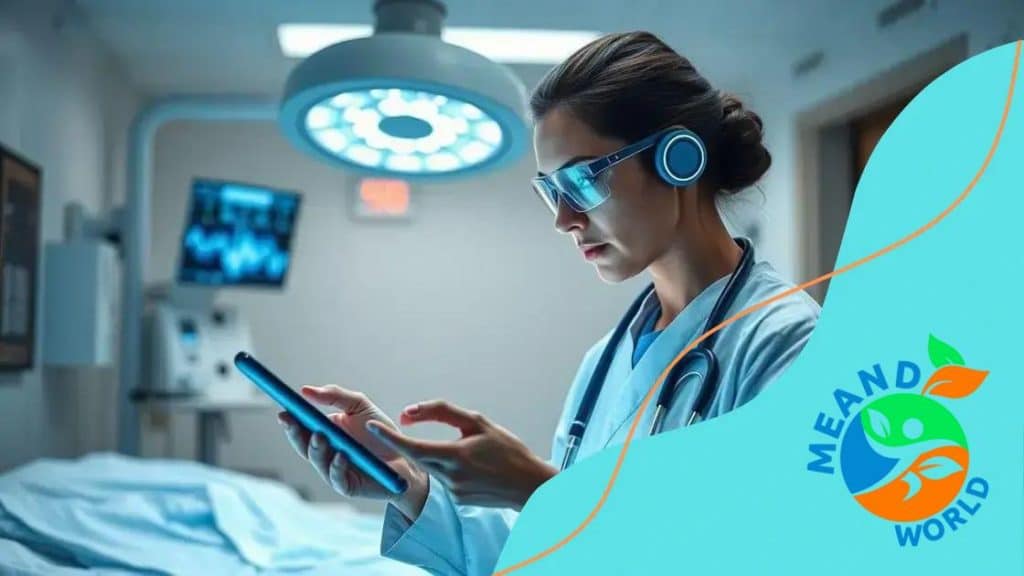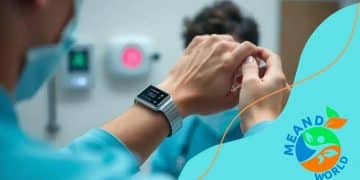How 5G is transforming the healthcare sector

Anúncios
5G is transforming the healthcare sector by enhancing telemedicine, improving patient data management, streamlining hospital operations, and enabling the use of advanced technologies like AI and wearables for better patient care.
How 5G is transforming the healthcare sector opens up exciting possibilities for medical professionals and patients alike. Imagine faster diagnoses and improved patient outcomes. Curious about what this means for you?
Anúncios
Understanding 5G technology
Understanding 5G technology is key to grasping its impact on various sectors, especially healthcare. It represents the fifth generation of mobile networks, offering significant speed and connectivity improvements. This new technology provides faster data download and upload speeds, lower latency, and allows for a greater number of connected devices.
Anúncios
The advantages of 5G extend beyond mere speed. Its enhanced capacity means that facilities can support more connected devices without compromising performance. This is critical for healthcare, where multiple devices are often used to monitor patient health simultaneously.
Key Features of 5G
Some of the standout features of 5G include:
- Higher data rates: Achieving speeds up to 20 Gbps, enabling real-time data transfer.
- Reduced latency: Bringing the response time down to 1 millisecond, improving interactive services.
- Massive device connectivity: Supporting up to 1 million devices per square kilometer.
- Energy efficiency: Allowing for devices to consume less power while staying connected.
Moreover, 5G technology facilitates advanced applications such as augmented reality (AR) and virtual reality (VR) in healthcare. Imagine surgeons using AR glasses to overlay critical data during operations or patients experiencing therapies remotely in a VR environment.
Overall, 5G is more than just a faster connection; it significantly enhances operational efficiency and patient care in the healthcare industry. As healthcare systems begin to adopt these technologies, the potential for innovation and improvement will only grow.
Enhancing telemedicine capabilities
Enhancing telemedicine capabilities is a significant shift in how healthcare is delivered. With the introduction of 5G technology, telemedicine is set to become more efficient and accessible. Patients can now receive high-quality care remotely, which is particularly beneficial in rural areas where healthcare services may be limited.
The speed and low latency of 5G enable real-time video consultations, allowing healthcare providers to diagnose and treat patients without the need for in-person visits. This development not only saves time but also reduces costs for both providers and patients.
Benefits of Telemedicine with 5G
Some advantages of enhanced telemedicine capabilities include:
- Improved patient access: Patients can connect with specialists from anywhere, breaking geographic barriers.
- Faster response times: Real-time data transfer means quicker consultations and diagnostics.
- Increased engagement: Patients are more involved in their health management, with easy access to their medical records and care plans.
- Cost savings: Reduced travel costs for patients and lower overhead for healthcare facilities.
Additionally, the integration of wearable technology and connected health devices into telemedicine platforms complements 5G advancements. These devices can continuously monitor vital signs and send data directly to healthcare providers. This can lead to more proactive care and timely interventions.
Moreover, the use of virtual reality (VR) and augmented reality (AR) in telemedicine is becoming more prevalent. Healthcare providers can utilize AR to visualize medical procedures or showcase 3D models to patients, making explanations clearer and improving understanding of health issues.
Improving patient data management

Improving patient data management is essential for providing quality healthcare. With the advent of 5G technology, healthcare providers can better manage, store, and share patient data securely and efficiently. This presents a transformative opportunity for hospitals and clinics to enhance patient care.
The integration of 5G enables real-time updates to electronic health records (EHRs), ensuring that healthcare professionals have immediate access to the most current patient information. This immediate access can significantly reduce the chances of errors in treatment and diagnosis.
Benefits of Enhanced Data Management
Adopting improved data management practices brings several key benefits:
- Streamlined processes: Automated data entry and updates can save time for healthcare professionals.
- Improved accuracy: Better data management minimizes human error and promotes reliable patient records.
- Enhanced collaboration: Different departments can share information effortlessly, leading to better coordinated care.
- Data-driven decisions: With accurate data, healthcare providers can make informed decisions quickly.
Moreover, the use of advanced analytics tools can help in interpreting data trends and identifying patient needs more effectively. For instance, predictive analytics can forecast potential health issues based on patient history.
Additionally, ensuring the privacy and security of patient data is paramount. 5G technology supports enhanced security protocols, making it harder for unauthorized parties to gain access to sensitive information. Protecting patient data increases trust in healthcare systems.
In conclusion, with 5G technology, healthcare facilities can move towards a more connected and efficient future in managing patient data. This not only leads to better care but also creates a healthier healthcare ecosystem.
Streamlining hospital operations
Streamlining hospital operations has become increasingly vital as the healthcare industry faces growing demands. Utilizing 5G technology helps hospitals enhance efficiency and improve patient care. With faster communication between devices and staff, hospitals can respond more quickly to patient needs.
The integration of smart devices and IoT technology allows for seamless data sharing. For instance, nurses can receive real-time alerts about patient conditions from connected devices, enabling them to take immediate action if necessary. This not only saves time but also boosts overall patient satisfaction.
Key Improvements in Hospital Operations
Implementing 5G technology in hospitals can lead to various improvements:
- Efficient resource allocation: Hospitals can track equipment and staff usage in real time, optimizing workflow and reducing waste.
- Enhanced communication: Instant communication between departments leads to faster decision-making and better patient outcomes.
- Improved patient flow: By using data analytics, hospitals can reduce wait times and improve the patient experience.
- Remote monitoring: Patients can be monitored through connected devices, allowing healthcare providers to swiftly intervene when necessary.
The use of artificial intelligence and machine learning is also a significant aspect of streamlining operations. These technologies can analyze vast amounts of data, helping hospitals predict patient admissions and optimize staffing levels accordingly.
Moreover, using virtual assistants equipped with AI can assist hospital staff in managing tasks, providing quick answers to common questions, and freeing up time to focus on patient care. As a result, the hospital staff can maintain a higher level of efficiency and care quality.
Future trends in healthcare technology
Future trends in healthcare technology are rapidly evolving, driven by innovations that harness the power of 5G. These advancements are poised to change how healthcare is delivered and experienced. One major trend is the expanded use of telehealth, which enables patients to receive care remotely. This convenience improves access to services and allows for more flexible treatment plans.
As technology progresses, the integration of artificial intelligence will become more prevalent. AI can assist healthcare providers with diagnostics, patient management, and personalized medicine. For instance, algorithms can analyze imaging data to help detect diseases earlier, enhancing treatment outcomes.
Emerging Technologies in Healthcare
Several emerging technologies are promising to reshape the future of healthcare:
- Wearable devices: These devices monitor patient health metrics continuously, providing real-time data to healthcare professionals.
- Blockchain: This technology will enhance data security and patient privacy by creating secure, transparent records.
- 3D printing: This can create custom implants and prosthetics tailored to individual patients.
- Robotics: Robotic systems can assist in surgeries, allowing for greater precision and less recovery time.
The use of big data analytics will also play a critical role in future healthcare. By analyzing vast amounts of patient data, healthcare providers can identify trends, predict outbreaks, and improve treatment methodologies. This data-driven approach enables evidence-based decisions.
Moreover, healthcare is increasingly adopting personalized medicine, tailored to the unique genetic makeup of each patient. This approach improves the effectiveness of treatments, leading to better outcomes and fewer side effects.
As 5G networks expand, the connectivity of devices and services will enhance every aspect of patient care and hospital operations, making healthcare more holistic and efficient.
FAQ – Frequently Asked Questions about 5G in Healthcare
How does 5G improve telemedicine?
5G enhances telemedicine by providing faster data transfer and low latency, allowing real-time video consultations and efficient remote monitoring of patients.
What are the benefits of using AI in healthcare?
AI in healthcare can improve diagnostics, personalize treatment plans, and assist providers in managing patient data more effectively.
How does 5G technology enhance patient data management?
5G technology allows for real-time updates to electronic health records, ensuring healthcare providers have immediate access to the most current patient information.
What future trends can we expect in healthcare technology?
We can expect advancements such as increased telehealth services, the use of wearable devices, and improved data analytics for personalized medicine.





